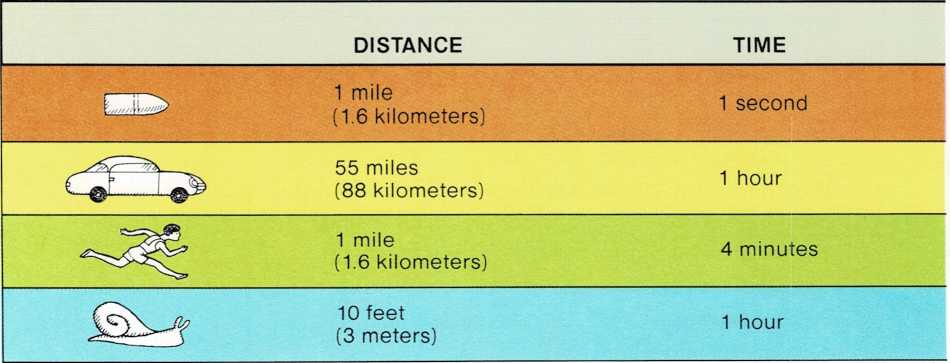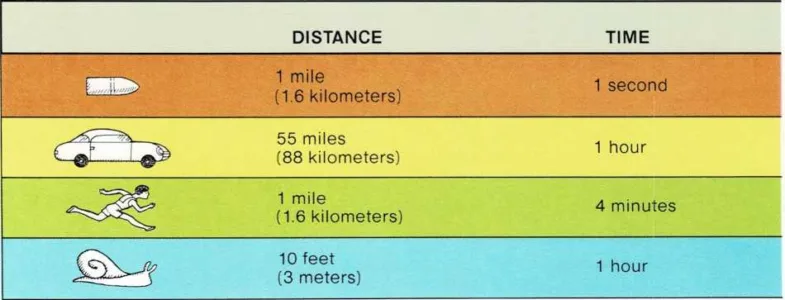Measuring speed
The mighty Superman can move faster than a speeding bullet—but how
fast is that? A tiny snail creeps along at what is called a “snail’s
pace”—but how slow is that?
There’s an easy way to measure the speed of everything, from a creeping
snail to a bullet fired from a rifle. To measure speed you have to know
only two things—time and distance. You simply find out how much time
it takes for something to move a certain distance.
Suppose you wanted to know how fast—or how slowly—a snail crawls.
You’d need a watch, for the time. For the distance, you might use a
ruler. You simply find out how long the snail takes to crawl the length
of the ruler.
Let’s say the snail takes 6 minutes to travel 12 inches (30
centimeters). By dividing the distance by the time, you’ll find that the
snail moves at a speed of 2 inches (5 centimeters) per minute. At this
rate, it would take the snail 528 hours (twenty-two days) to travel one
mile (1.6 kilometers)!

This is how all speed is measured—with time and distance. But the time
may be in minutes, seconds, or hours. And the distance may be in feet,
meters, miles, or kilometers.
For most things, speed is measured in miles or kilometers per hour. This
is the way the speed of a car is measured. When the pointer of a car’s
speedometer is on the number thirty, it means the car is moving at a
speed of thirty miles, or thirty kilometers, per hour. That is, at this
speed the car could go a distance of thirty miles, or thirty kilometers,
in one hour.
The speed of people running in a short race, such as a hundred-meter
dash, is measured in seconds. The world record for one hundred meters
(110 yards) is 9.9 seconds for men and 10.5 seconds for women. How fast
do you think you can run this distance? If you want to find out, just
measure the distance, get a friend with a stopwatch to time you, and
see!
And how fast is Superman? Well, to move faster than a speeding bullet he
might have to travel at the speed of more than five thousand feet (1,500
meters) per second!


